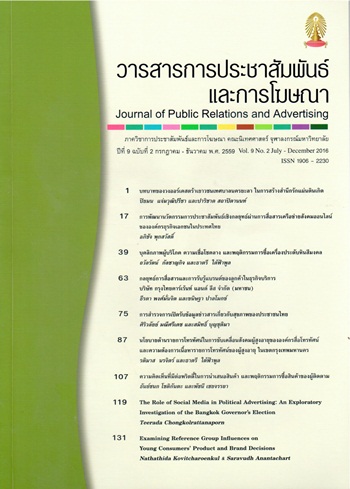นโยบายด้านรายการโทรทัศน์ในการขับเคลื่อนสังคมผู้สูงอายุ ขององค์กรสื่อโทรทัศน์ และความต้องการเนื้อหารายการโทรทัศน์ ของผู้สูงอายุในเขตกรุงเทพมหานคร
Main Article Content
Abstract
This research aimed to investigate: 1) the policy issued by television organizations about television programs for the elderly, and 2) the desire of elderly living in the
Bangkok metropolitan area for the television programs content. The study was conducted based on both qualitative and quantitative methods. The former was used to examine the first objective by using in-depth interviews. The participants were the staff working for television stations involved in laying out a policy about the elderly’s television programs and the staff working for a company producing such programs. Purposive sampling and the snowball technique were applied at this stage. The latter was used to obtain information about the elderly’s desire for the television program content. Survey research and a questionnaire were used at this stage. Four hundred participants aged over 60 and living in the Bangkok metropolitan area were included in this study. Descriptive statistics, frequency distribution, percentage, mean and standard deviation were used to analyze the data
According to the qualitative data, the target television stations that were commercially operated tended to offer programs that gained popularity or high ratings among the elderly audience since a high rating can attract more sponsors. The television stations that did not offer these programs do so because they targeted the mass and not a niche. Even though they offered such programs as health programs and Buddhism programs that could attract the elderly there were only a few of them. This was because health and Buddhism programs could not attract enough sponsors. If they offered more of these programs, they could not stay competitive in this arena. The target television stations that were public television stations offered programs for the elderly because they were in line with one of their missions stating that they had to provide every age group with a suitable program. As for the state television stations, programs were offered according to the 2013 Criterion for Broadcasting Radio and Television Programs for Digital Televisions for Public Services issued by the National Broadcasting and Telecommunication Commission (NBTC).
According to the quantitative data, the participants watched the programs through the television set most and the programs that they preferred most were about health care and improvement on mental well-being, while those they preferred least were about technology.


